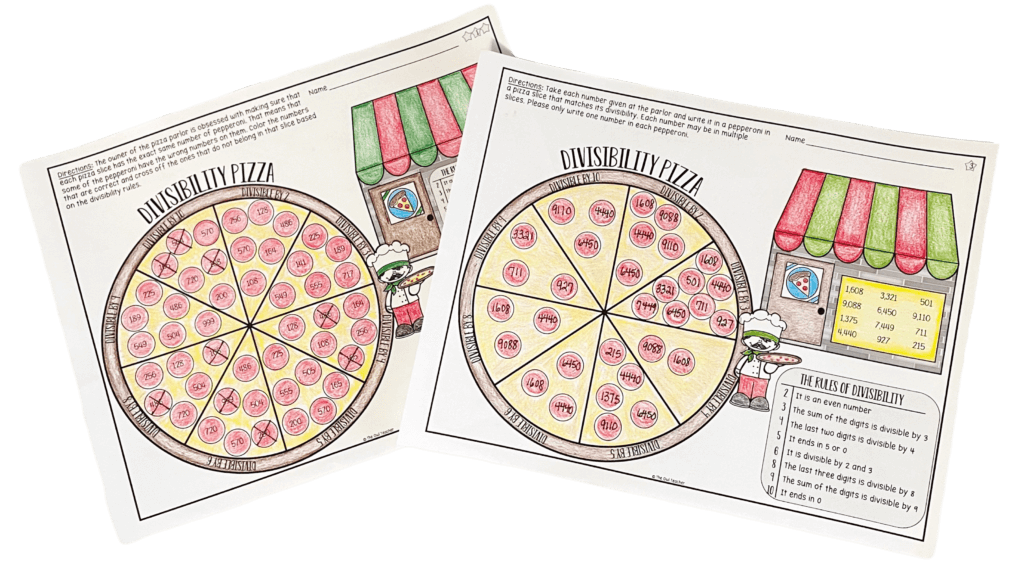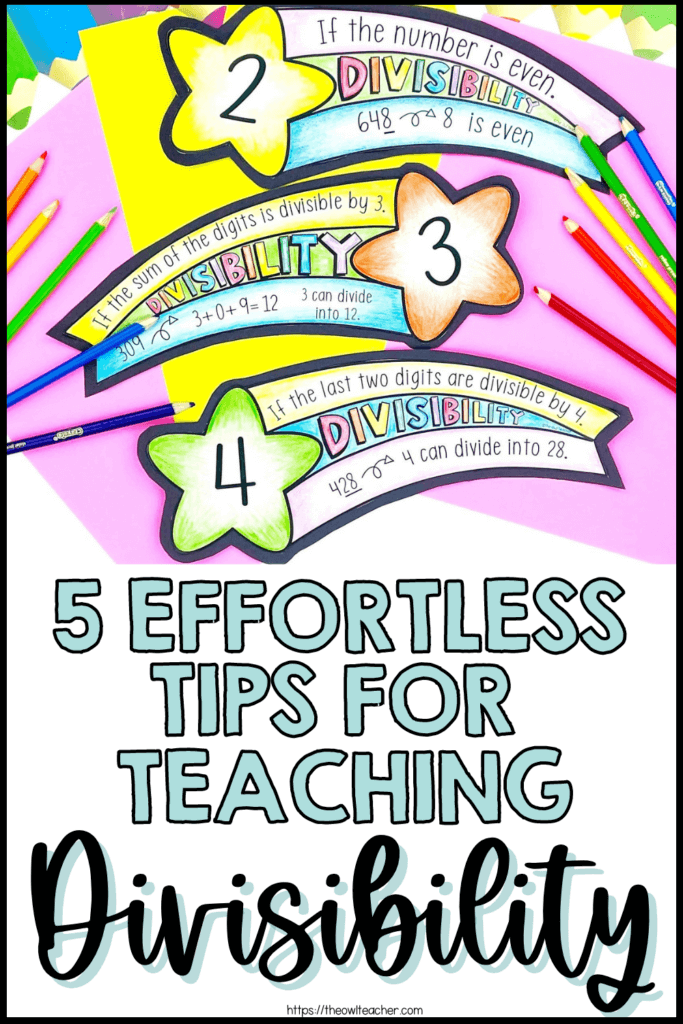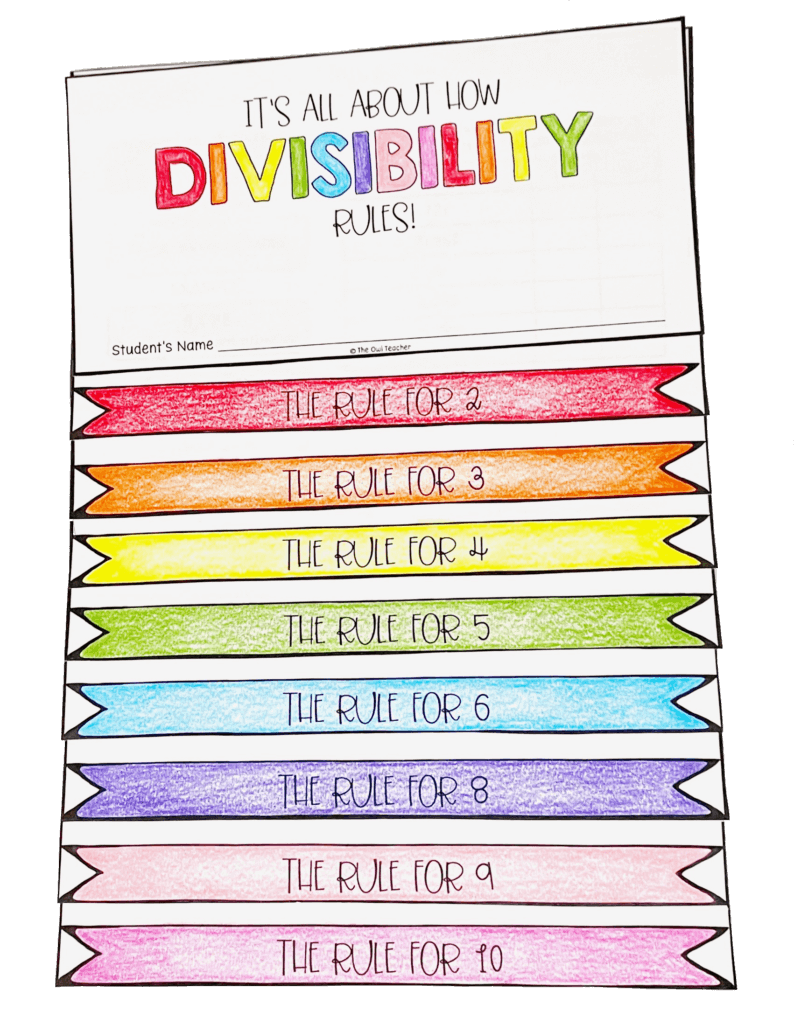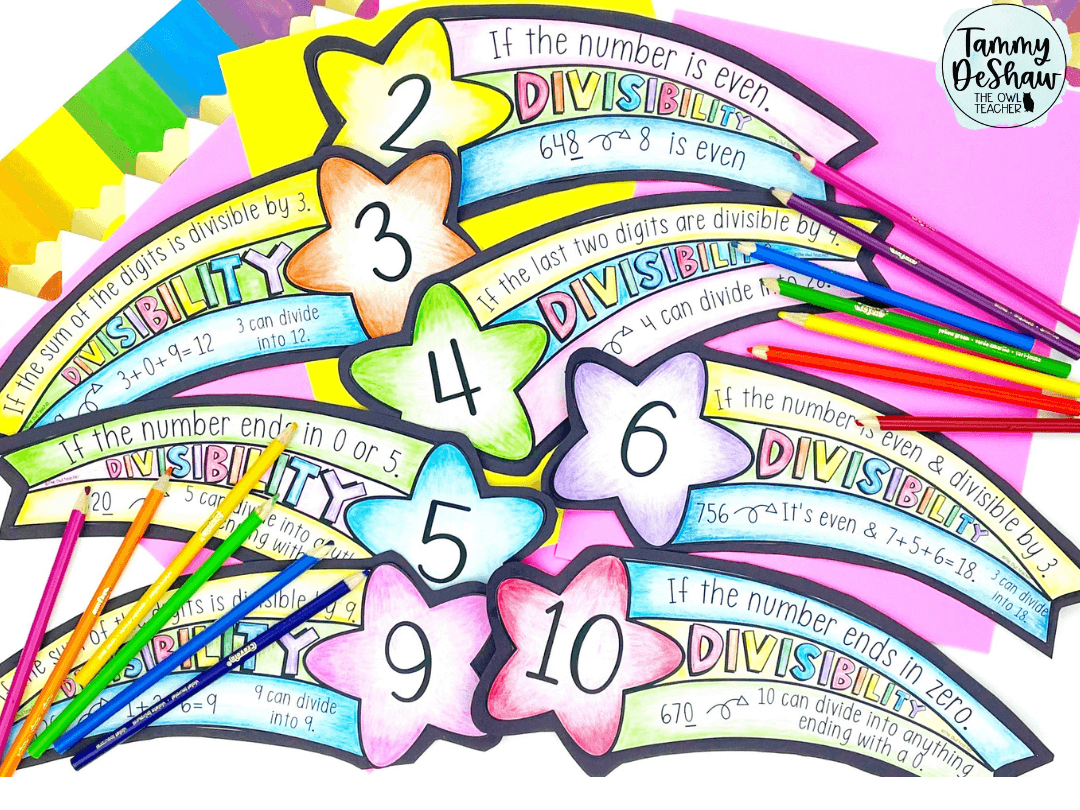
Divisibility.
It’s an intimidating word, isn’t it? And I don’t just mean because you have to check several times to make sure you spelled it correctly (one word does not need that many Is… Just me?). No, I mean because division itself makes up such a huge part of the foundation of math that students will use for the rest of their lives. Understanding divisibility can make a world of difference for a student.
And, of course, the responsibility for their understanding rests squarely on our strong shoulders as educators–like we didn’t already have enough going on, right? But, hey, no pressure. 😉
Seriously, no pressure. As significant as divisibility is, I’m about to lift all that weight off your shoulders with five tips that have changed the way I teach divisibility for the better. And as if that wasn’t enticing enough… There’s a freebie at the end. That’s right–lifesaving tips and a freebie? Day = Made.
Now, pull up a chair and grab a coffee. It’s time to tackle divisibility.
1. Remember the Rules!
No, not your classroom rules (though those are vital to your classroom’s well-being). I mean divisibility rules. I know, I know: Tammy, everyone knows the divisibility rules. I hear you. I want to emphasize the importance of a rock-solid foundation, and that’s where these rules come in.
Divisibility rules will be the backbone of your lessons. Just like how your classroom rules keep everything running so smoothly that your classroom can literally run itself, the knowledge of these divisibility rules will keep your students above water when things get turbulent. Let your students know from the very beginning–just like with your classroom expectations–that there will be rules.
Of course, some students have a natural pushback to the word “rules.” Communicate to them that these rules exist to help them, and will make the oh-so-scary division so much easier. What’s that? Easy division? Watch their ears perk up at the sound!
2. Go Hands-On!
With everything in the classroom, hands-on learning creates a lasting experience. Anyone who frequents my blog knows I am a huge supporter of hands-on learning, and anyone who knows me personally knows that hands-on is my learning style, too. Hands-on learning is so vital to creating a positive learning environment and to teaching for retention, not memorization.
So how can you go hands-on with divisibility rules? For that, I’ll share my favorite word: craftivities! My classroom is decorated year-round with various mobiles hanging from the ceiling and relevant posters on the wall. Is it overkill? Maybe, but students are engaged and love to admire their own creations!
Creating craftivities for divisibility is easier than you may think. For a simple activity, use the tried-and-true basic foldable method, or spice things up with a cootie-catcher they can share with friends. If you’re looking for something a little more novel and exciting, you could try a pie. That’s right: a pie! I’m willing to bet your students have never put together a hanging pie mobile before. Luckily, I have just the thing: a divisibility rules pie circle book. Talk about engaging, right? What’s more engaging than a craftivity that gets your tummy rumbling thinking about delicious pie? However, this circle book feeds their brains, not their tummies.
… Too cheesy? Let’s move on.
3. Practice!
Students need to practice the rules of divisibility to help them remember these foundational skills. They are helpful for so many things and a great shortcut for dividing. Students can practice these rules through application such as the divisibility pizza worksheets (as seen below) where students take numbers and place them on a pepperoni in a pizza slice with that divisibility rule. It’s a differentiated set, so some sheets already have empty circles so students know how many numbers go in that slice, while another sheet has no circles (or hints) and the last sheet already has numbers in it that they need to cross out the ones that don’t belong. You can find that resource here.

Another engaging way to practice divisibility is through flipbooks! Students can write in the rule and an example and then apply these rules through practice. Then they can use the flipbook as a reference tool later when needed.
Inside each page are practice boxes for students to review the previous rules and practice the current rule. You can find the divisibility flip book here.
4. Encourage!
Let’s face it: for many students, division is hard. By extension, so, too, is divisibility. That’s why the geniuses behind divisibility rules came up with the rules in the first place! It’s easy for students to get discouraged. To head off feelings of frustration that may crop up from time to time, make sure you’re creating a positive learning environment. Reinforce their achievements and use scaffolding–not rescuing!–to guide them back on track when they stumble.
Remind students often of their hard work and how far they’ve come. And, hey, if they need a more physical reminder of how much of a super star they are, check out my shooting star divisibility rules craftivity! In the same vein, this resource encourages students to investigate each rule as they put together the hanging mobile. In addition, it includes a blank set of stars for students who could use the opportunity to write in the rules.
Whatever method you choose to use, just remember to keep that positive learning environment alive. We want our students to swim, not sink, and your words of encouragement are the life jacket they need!
5. Don’t Overwhelm Them!
I know, I’ve said it about a million times already: divisibility can be challenging. There will always be challenges, especially in math, but that’s not necessarily a bad thing–after all, we only grow through challenges.
That being said, there is definitely such a thing as too much of a challenge. Information overload is very real. If you throw every single divisibility rule at your students at once, they’ll short-circuit! Break it up. Set smaller goals. In fact, students will be encouraged each time they reach a new milestone! Allow them to model, practice, and master each divisibility rule before you move on to the next one. It’ll make it easier on you, too, in the long run!
Of course, there’s a certain sense of accomplishment when finishing the last piece of a puzzle. The closer you get to the finish line, the more of a drive there is to keep going. Take, for example, my divisibility rules hanging mobile. If you focus on putting together only a few pieces of the mobile each day, students will grow more and more excited as they see their mobiles nearing completion. Once they’ve finished piecing together the whole thing, they can look back at their newfound mastery of the rules with a sense of pride!
Remember: divisibility is intimidating, but it doesn’t have to be, for you or your students. With these five tips, I’m positive you’ll turn your kiddos into little divisibility masters in no time! If you have more tips or advice, feel free to add them in the comments below or reach out.
Thanks for reading!




















